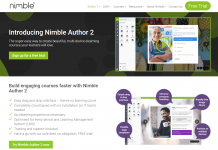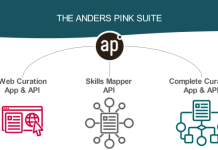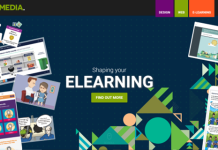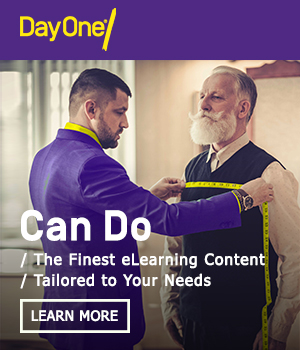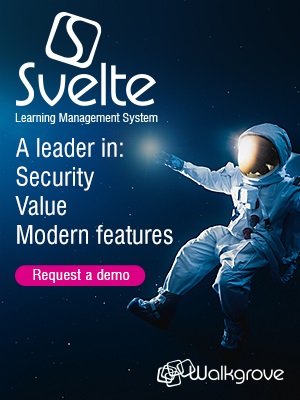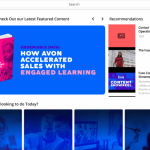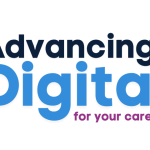In weighing up the pros and cons of custom content vs off the shelf elearning courses, it can feel overwhelming trying to work out which training solution is the best fit for your needs.
For an industry whose primary role is to help people understand things, the eLearning industry is ironically non-transparent.
There’s a lot of jargon and sales talk thrown around, so the goal of this article is to cut through the noise and help you make an informed decision.
But before we start laying everything out, let’s take a step back…
Only pack the essentials
Make time to behave like a kid/therapist
You’re probably wondering ‘what?!?’ Let me explain… Both kids and therapists want to know the truth of things – challenging your reasons for something, digging deeper until you have to face a fundamental (and occasionally painful) truth underneath. How do they do this? – They simply ask WHY. And they don’t stop until they hit bedrock (or you send them to bed).
It can be hard work but the reality is that it ends up being much better to build from that essential solid foundation, if you take the time to reach it.
The exact same thing should be applied to choosing a training solution – Challenge what you think you want and do a quick check to find out what you actually need. It will always pay off in the long run and avoid you making assumptions as well as wasting budget.
The key is drilling down to the essential business need underneath, because if training doesn’t satisfy a business need, then it is fundamentally useless.
Like Alanis Morrisette famously sang – “It’s like 10,000 spoons when all you need is a knife” – except it’s not ironic… it’s just a waste of resources.
So ask yourself:
- What is the essential business need behind this training? If you don’t know the business need behind the training, find the person who does and ask them. For example – your company has merged with another company and all the new staff and customers need to be onboarded as quickly as possible into the existing company to minimise resource costs.
- What are the minimum essential actions you need your learners to do to meet this need identified in question 1? For example – the essential thing is your new staff need to be able to transition new customers onto the main database to keep money flowing in.
- What is the minimum essential knowledge that your learners need to carry out these actions from Question 2? For example – Your staff needs to know how to transfer account details and set up new direct debits.
Now it’s your turn, give it a try.
1 – Take a piece of paper or a whiteboard and, starting at the top, write your business need.
2 – Then write the various essential actions required underneath it in columns.The easiest way to identify them is to ask yourself:
‘What is critical to do, and in what order, or we can’t meet the business need?’
3 – Finally list the essential knowledge for each action in order. Ask yourself:
‘What is critical to know, otherwise we can’t perform this action?’
Armed with this map you should now have a clear idea of what essential knowledge your learners need in service of your business need.
This also makes it much easier to talk to a content provider when you are scoping out a project as you’ll already have done a lot of the work when it comes to setting your goal.
Good – Fast – Cheap
Below is a very popular venn diagram that sums up the fundamental relationship between three key attributes which apply to any project. It’s referenced universally across every industry and it’s designed to illustrate that you can only ever have two of the three attributes:
- Good and Fast but at a higher cost.
OR
- Fast and Cheap but with a compromise on quality.
OR
- Cheap and Good but with a longer delivery time.
The common argument is that the sweet spot in the centre with all three is unachievable, so as a customer you should – “Just stop asking for it because it doesn’t exist!”
But this is a simplification used to end an argument. ‘Good’ is completely subjective and in this case very non specific. We need to dig deeper like a kid/therapist again… What is ‘good’?
Good means it satisfies a business need. Surely?
In which case it’s not so black and white any more. As long as you have defined your business goal, you can explore the greys of ‘good enough’ and get a healthy balance.
Don’t be perfect. Be good enough. The Pareto Principle or 80/20 rule
The basic idea is 80% of effects come from 20% of causes.
So in theory if you can ensure that you focus your 20% of resources correctly, you can get your 80% of results you need. You reach your ‘good enough’ and you can be much more cost-effective instead of using 80% more resources stretching to reach that last 20% to ‘perfect’.
In this context, if you have defined your business needs you can weigh up what your 80% is. What is ‘good enough’ to fulfil the business needs? Staying cost-effective is all about focusing on your ‘good enough’.
For example:
You could provide onboarding for your new team members with VR – they get to explore the office and meet the team and interact with them. Sounds great! But If you can get them onboarded to a ‘good enough’ level with just a 2D interactive office map showing important locations, coupled with a personalised bio of each team member, then why waste those extra resources.
The same goes for the content itself as much as the delivery method. If you can onboard them to a ‘good enough’ level with only 20% of the content, do it. They can always pick up the rest once they are up and running.
The 80/20 rule can be applied to everything and is all about asking, ‘is this critical?’ If not, lose it.
Now we are looking at everything with an ‘is this critical?’ eye, we can dive into the different types of training:
Off the shelf content
Premade eLearning that is cheaper and faster to deliver. The compromise is there are limits to the level of customisation of the content. The trick is making sure it is ‘good enough’ and that all your learning goals are met.
Advantages
- Is generally cheaper as it’s already built
- Readily available content for faster delivery – pick and mix modules.
Disadvantages
- Limited customisation of content both in regards to content and style/branding.
Custom content
If you can’t find off the shelf content that meets your needs then bespoke content can give you greater levels of customisation. The compromise is that delivery duration and costs can be greater as you are paying with time for the added control. The trick is making sure it is ‘good enough’ and that all your learning needs are met in the most cost effective way possible.
Advantages
- Simpler to edit and update
- Can be aligned exactly with your learning needs
- Can be aligned exactly with your Business culture
Disadvantages
- Takes more time to produce so is generally more expensive
- Takes more time to produce so takes longer to deliver
Let the message dictate the medium
As a rule of thumb, the best way to get the most impact from your training is to choose the medium that most effectively and efficiently trains your learners on what to do. For example, if you want learners to be able to use a piece of desktop software, present them with an interactive interface to practise navigation rather than writing lengthy copy about it.
On the flip side, if all it takes is a well designed infographic to meet your learning goal then use it. The focus should always be on the best value medium for delivering learning in service of the business need. Which leads us to…
Blend the best of both worlds
Custom or off the shelf content aren’t mutually exclusive though. Courses can cover a wide range of topics so mixing mediums can be a great option to give you greater flexibility and the best value for money.
You can save resources when off the shelf is good enough for some topics and spend resources when other topics require greater levels of control with custom content.
Advantages
- Optimised use of resources is better value for money.
- Greater control to edit and update where it matters.
- Can be aligned exactly with your learning needs where it matters.
- Can be aligned exactly with your business culture where it matters.
Disadvantages
- You need to have defined your business needs beforehand or it won’t be effective.
So with the right strategy, a blended approach can hit that sweet spot in the middle and give you the best value for your budget.
Other things to consider
Scenario-based learning is practising
If most corporate training is designed to enable a person to perform on a given task or in specific situations, it raises the question, ‘if you can’t think of a scenario in which you can use it, should it even be taught?’ As humans, we learn from a very early age by practising and mimicking.
The parts of our brains that are stimulated by carrying out a task are also stimulated by watching and mimicking the very same task. This is why the best way to learn is to get as close to the real scenario as possible. It’s a natural and very effective way to learn. So when considering your training ask yourself, ‘what would I use this for?’ If you can’t think of anything, maybe lose it.
Engagement is the result of a good user experience.
Engagement is a buzzword thrown around like a silver bullet, but in reality, it is a byproduct of a good user experience. It doesn’t matter how many bells and whistles you put on something – if it doesn’t teach them what they need, or wastes their time, or is awkward to use, learners will disengage and look elsewhere.
Just think how many people go look things up on YouTube or Google. It’s because there is no barrier to access what they need.
It should be treated as a product and always focus on the critical path – if you keep adding blades to razors like Wilkinson Sword and Gillette do, sooner or later users will realise they don’t need it, while someone else will come along with no nonsense Dollar Shave Club.
Accountability through data
eLearning should be measured just like every other aspect of business. Look at Netflix – it makes every decision based on its metrics, embracing the scientific method.
Teaching is often seen as an art so the idea of measuring it is somehow cold and inhuman. But the reality is data is the only way you can add accountability, eliminate assumptions and prove results.
Science and art aren’t mutually exclusive – use both If you want your content and business to evolve. Holding your eLearning accountable for the results it promises is key, just like in any other area of business.
And it’s done by adding SMART goals at the start, data tracking throughout, and reviewing stages upon completion. This helps you not only measure success but evolve in an informed way going forward. At the end of the day, what would it cost you if your eLearning achieved nothing?
Review projects at both ends – choose what is worth measuring at the start and then benchmark it. This way, you can refer back to it at various milestones after the solution is up and running and get a good sense of the overall success of the piece. If it hasn’t been measured it’s easy to make assumptions.
Good design is reductive
Don’t feel all content has to be the same level of complexity either. Don’t be scared to ask, ‘can this piece be simplified and still be effective?’
For example, with onboarding, once learners are familiar with the bigger picture and company culture, sometimes all it takes is an easy-to-find screenshot to solve their issue when the time comes.
At the end of the day, time is everyone’s most valuable resource, make the most of it.
If you’re looking at the pros and cons of custom content vs off the shelf elearning courses, we hope you found this article useful!
Written & Designed by Brendan Cox
Co-Founder of Blend Interactive Content
Visit Blend here at https://Blend.training
Connect via Brendan Cox’s Linkedin profile here.








